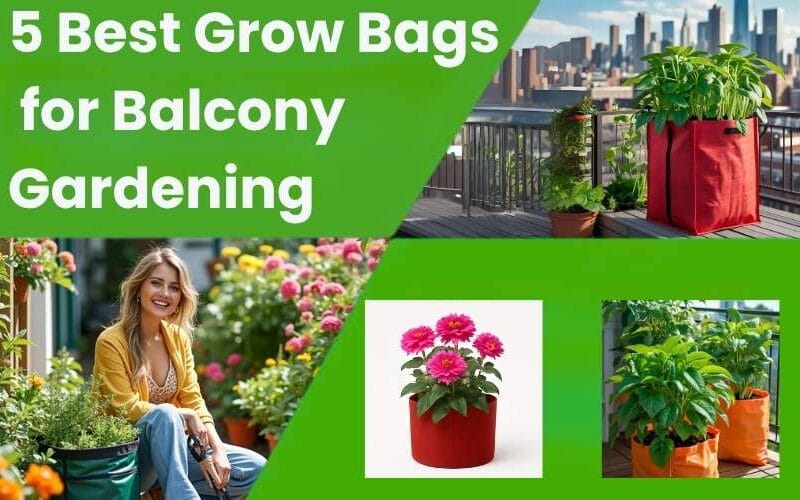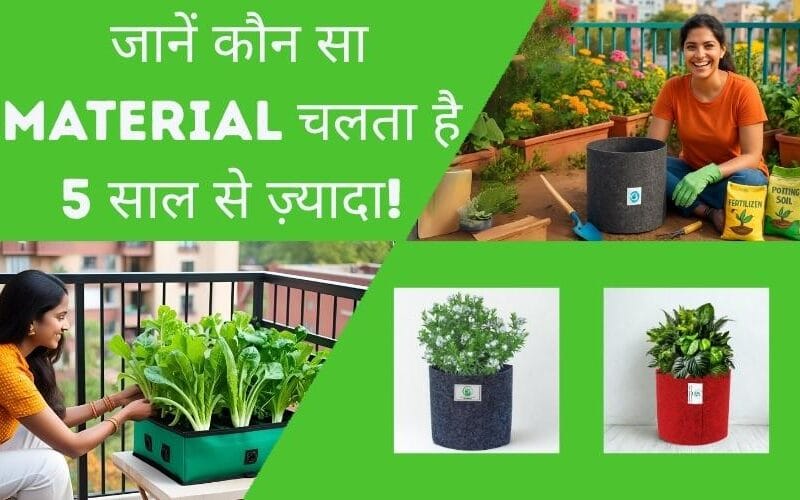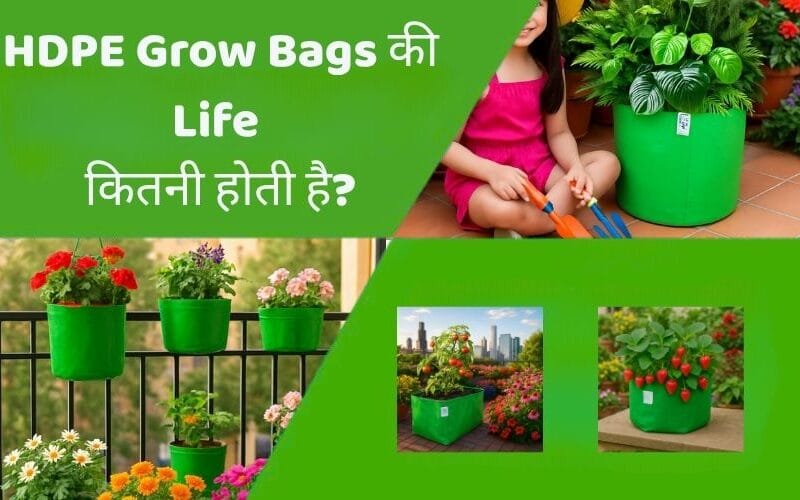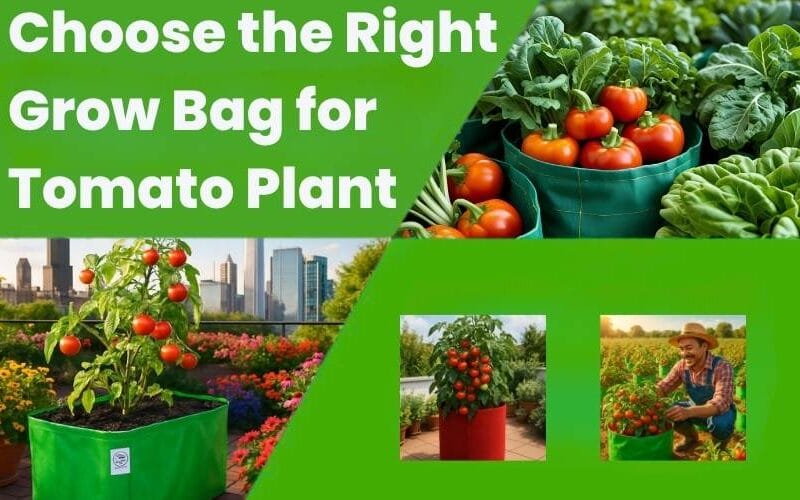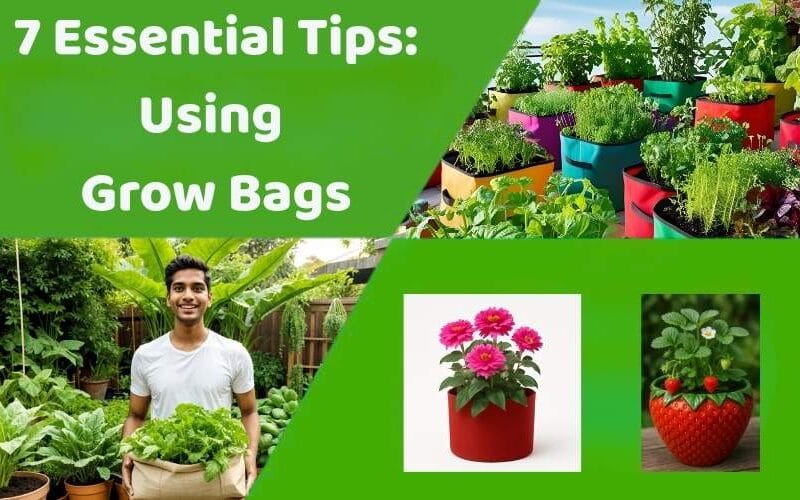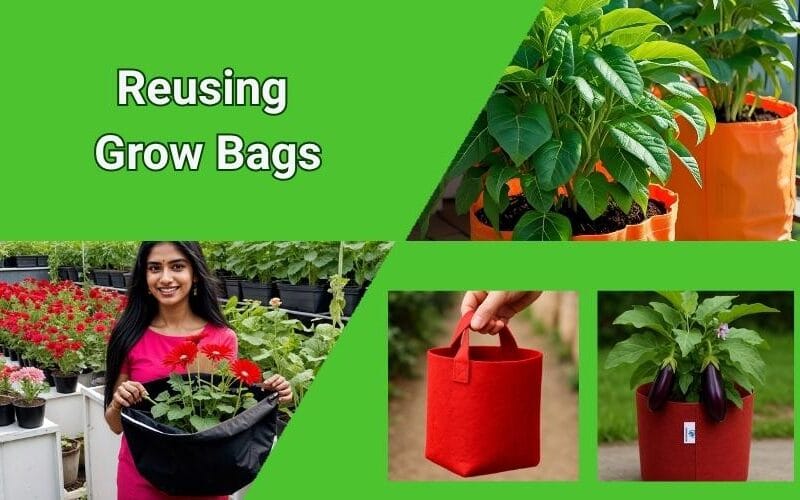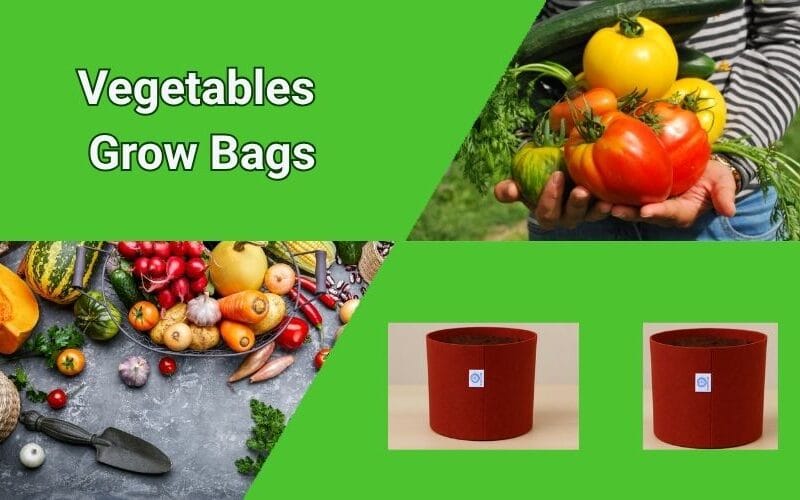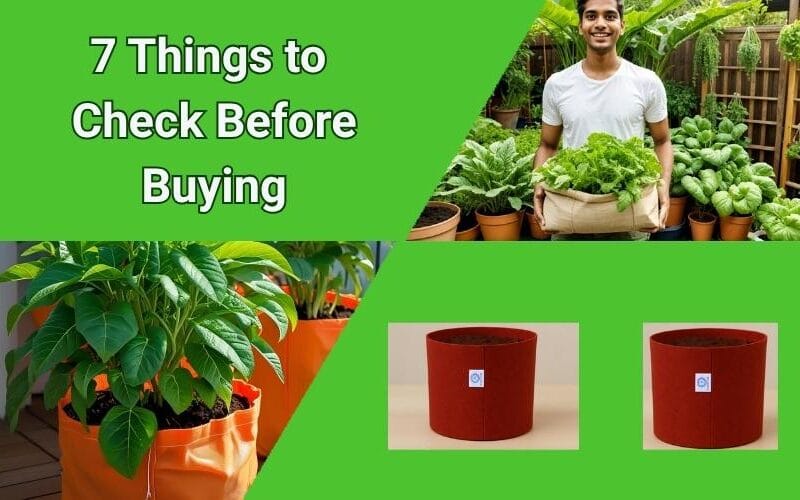7 Essential Tips: Unlock the Secrets to Using Grow Bags for Success!
Thinking about starting a garden? Or maybe you’re already using those handy fabric or plastic bags? Using Grow Bags has become incredibly popular, especially for urban gardeners with limited space. They offer convenience, portability, and can lead to fantastic harvests.
But just having a grow bag isn’t enough. To get the best results and ensure your plants thrive, you need to follow some best practices for using grow bags. Getting the right balance of Drainage, Sunlight, and Soil is crucial for success.
If you want to master using grow bags and turn your balcony, patio, or rooftop into a productive green space, this guide is for you! We’ll share 7 essential tips to help you succeed in using grow bags effectively.
Ready to learn the secrets to successful using grow bags? Let’s get started!
Mastering Using Grow Bags: 7 Key Practices for Success
Follow these tips to maximize your results when using grow bags:
1. Choose the Right Size When Using Grow Bags
Selecting the appropriate size grow bag is the first step to success. Different plants have different root needs.
Small bags (5-7 gallon) are perfect for herbs and leafy greens.
Medium bags (10-15 gallon) work well for peppers, bush beans, and eggplant.
Large bags (20+ gallon) are necessary for big plants like tomatoes, cucumbers, squash, or potatoes.
Using the right size ensures your plants have enough room for roots to develop properly, which is vital for a healthy plant and a good harvest.
2. Use the Ideal Soil (Potting Mix)
This is perhaps the most critical factor when using grow bags. Do NOT use heavy garden soil. It compacts easily in containers, leading to poor drainage and aeration. Always use a high-quality, well-draining potting mix designed for containers. A good mix is light, airy, and retains enough moisture without becoming waterlogged. Using the right soil mix ensures roots get the oxygen they need and prevents rot.
3. Ensure Excellent Drainage
One of the biggest advantages of using grow bags (especially fabric ones) is their superior drainage. However, you still need to ensure water can escape freely. If you’re using plastic grow bags, double-check that the drainage holes at the bottom are sufficient and not blocked. With fabric bags, ensure they are not sitting in a saucer of water for prolonged periods. Proper drainage prevents soggy soil, which is essential for healthy roots when using grow bags.
4. Water Correctly (Balance is Key)
Using grow bags requires careful watering. They can dry out faster than in-ground beds, but overwatering is still a risk.
Check soil moisture: Feel the soil about an inch or two deep. Water if it feels dry.
Water thoroughly: Water until you see water draining from the bottom/sides of the bag.
Water frequency: This varies based on weather, plant size, and bag material. Check daily in hot, sunny weather.
Consistent, proper watering ensures your soil provides the right moisture level without suffocating the roots.
5. Provide Adequate Sunlight
Most vegetables need at least 6-8 hours of direct sunlight daily to produce fruit. When using grow bags, place them in the sunniest location available in your garden space. If you have limited sun, focus on plants that tolerate partial shade (leafy greens). Proper sunlight gives plants the energy they need to grow strong and produce abundantly.
6. Feed Your Plants Regularly
Nutrients in the potting mix will be used up by growing plants or washed out with watering. To get maximum yield when using grow bags, you need to fertilize regularly.
Begin feeding a few weeks after planting.
Use a balanced liquid fertilizer or a slow-release granular fertilizer according to package instructions.
Consistent feeding provides plants with the necessary nutrients for healthy foliage, flowering, and fruiting.
7. Position Your Bags for Airflow
Good air circulation around your plants helps prevent fungal diseases. When using grow bags, place them with some space between them if possible, especially for bushy plants. Avoid crowding your bags into a corner where air cannot move freely. Proper placement benefits plant health and can indirectly boost yield.
👇 Explore more gardening tips in this post
Conclusion:
Mastering using grow bags comes down to paying attention to a few key practices: selecting the right bag and soil, ensuring perfect drainage, providing adequate sunlight, watering carefully, and feeding regularly.
By following these 7 essential tips, you can overcome common challenges and unlock the full potential of using grow bags to grow healthy, productive plants and enjoy a fantastic harvest right in your home garden. Get started today and experience the success of using grow bags effectively!
Grow Bag Size Chart
| Size (L x W x H) | Suitable Plants | Buy Now | |
|---|---|---|---|
| 6x6 inch Geo Fabric | तुलसी, धनिया, पुदीना, अजवाइन, हरा प्याज, गेंदा | Buy Now | |
| 9x9 inch Geo Fabric | तुलसी, मिर्च, धनिया, गुलाब, पोदीना, टमाटर | Buy Now | |
| 8x8 inch Geo Fabric | तुलसी, मिर्च, पुदीना, धनिया, | Buy Now | |
| 24x24 inch Geo Fabric | अंजीर, अमरूद, स्ट्रॉबेरी, ड्रैगन फ्रूट, कीवी, पैशन फ्रूट | Buy Now | |
| 18x9 inch Geo Fabric | पालक, मेथी, धनिया, पुदीना, अजवाइन, हरा प्याज | Buy Now | |
| 18x18 inch Geo Fabric | Strawberry, Lemon, Dwarf Mango, Tomato, Cucumber | Buy Now | |
| 9x9 inch HDPE Green | तुलसी, मिर्च, धनिया, गुलाब, पोदीना, टमाटर | Buy Now | |
| 36x12x12 inch HDPE Green | टमाटर, भिंडी, बैंगन, लौकी, कद्दू, फूलगोभी | Buy Now | |
| 24x9 inch HDPE Green | पालक, मेथी, धनिया, पुदीना, , सिलंट्रो | Buy Now | |
| 24x9 inch Grey | पालक, मेथी, धनिया, पुदीना, हरा प्याज, सिलंट्रो | Buy Now | |
| 24x6 inch HDPE Green | पालक, मेथी, धनिया, पुदीना, हरा प्याज, सिलंट्रो | Buy Now | |
| 24x12x12 inch HDPE Green | टमाटर, मिर्च, बैंगन, भिंडी, हरा धनिया, पालक | Buy Now | |
| 24x12 inch HDPE Green | स्ट्रॉबेरी, अंजीर, नींबू, ब्लूबेरी, लेमन ग्रास, टमाटर | Buy Now | |
| 18x18 inch HDPE Green | Strawberry, Lemon, Dwarf Mango, Tomato, Cucumber | Buy Now | |
| 18x12x9 inch HDPE Green | टमाटर, मिर्च, बैंगन, भिंडी, हरा धनिया, पालक | Buy Now | |
| 18x12x12 inch HDPE Green | टमाटर, मिर्च, बैंगन, भिंडी, हरा धनिया, पालक | Buy Now | |
| 16x10x8 inch HDPE Green | टमाटर, मिर्च, बैंगन, भिंडी, हरा धनिया, पालक | Buy Now | |
| 15x6 inch HDPE Green | Strawberry, Green Chili, Mint, Tulsi, Baby Spinach | Buy Now | |
| 15x6 inch Black | Strawberry, Green Chili, Mint, Tulsi, Baby Spinach | Buy Now | |
| 15x18 inch HDPE Green | Strawberry, Lemon, Mint, Green Chili, Spinach, Coriander | Buy Now | |
| 15x15 inch Red | Strawberry, Lemon, Mint, Green Chili, Spinach, Coriander | Buy Now | |
| 15x15 inch HDPE Green | Strawberry, Lemon, Mint, Green Chili, Spinach, Coriander | Buy Now | |
| 15x15 inch Black | Strawberry, Lemon, Mint, Green Chili, Spinach, Coriander | Buy Now | |
| 12x6 inch HDPE Green | Mint, Tulsi, Coriander, Green Chili, Baby Spinach | Buy Now | |
| 12x18 inch HDPE Green | Buy Now | ||
| 12x16 inch HDPE Green | Strawberry, Lemon, Green Chili, Mint, Spinach, Coriander | Buy Now | |
| 12x12 inch Red | Strawberry, Green Chili, Mint, Coriander, Baby Spinach | Buy Now | |
| 12x12 inch HDPE Green | Strawberry, Green Chili, Mint, Coriander, Baby Spinach | Buy Now | |
| 12x12 inch Grey | Strawberry, Green Chili, Mint, Coriander, Baby Spinach | Buy Now | |
| 12x12 inch Black | Strawberry, Green Chili, Mint, Coriander, Baby Spinach | Buy Now | |
| 12x10 inch HDPE Green | Strawberry, Green Chili, Mint, Coriander, Baby Spinach | Buy Now | |
| 10x6 inch HDPE Green | Mint, Tulsi, Coriander, Green Chili | Buy Now | |
| 10x10 inch Red | Mint, Tulsi, Coriander, Green Chili | Buy Now | |
| 10x10 inch HDPE Green | Mint, Tulsi, Coriander, Green Chili | Buy Now | |
| 10x10 inch Grey | Mint, Tulsi, Coriander, Green Chili | Buy Now | |
| 10x10 inch Black | Mint, Tulsi, Coriander, Green Chili | Buy Now |
Using Grow Bags – Frequently Asked Questions (FAQs)
Q1: What is the best soil to use when using grow bags?
A: A high-quality, well-draining potting mix is recommended. Avoid heavy garden soil.
Q2: How often should I water plants when using grow bags?
A: Check the soil daily and water when the top inch feels dry. Frequency depends on conditions and plant size.
Q3: Do I need to add fertilizer when using grow bags?
A: Yes, potting mix provides initial nutrients, but you should fertilize regularly (typically every 2-3 weeks) for continued growth and yield.
Q4: How important is drainage when using grow bags?
A: Drainage is extremely important. Poor drainage leads to root rot. Fabric grow bags offer natural excellent drainage.
Q5: Can I use a grow bag indoors?
A: Yes, you can use grow bags indoors, but you’ll need a saucer or tray underneath to catch excess water and protect surfaces. Ensure the plant gets enough light (natural or artificial).
Q6: What are the benefits of using fabric vs plastic grow bags?
A: Fabric grow bags offer better aeration, air pruning, and temperature regulation compared to plastic ones, leading to healthier roots and potentially better plant growth.



